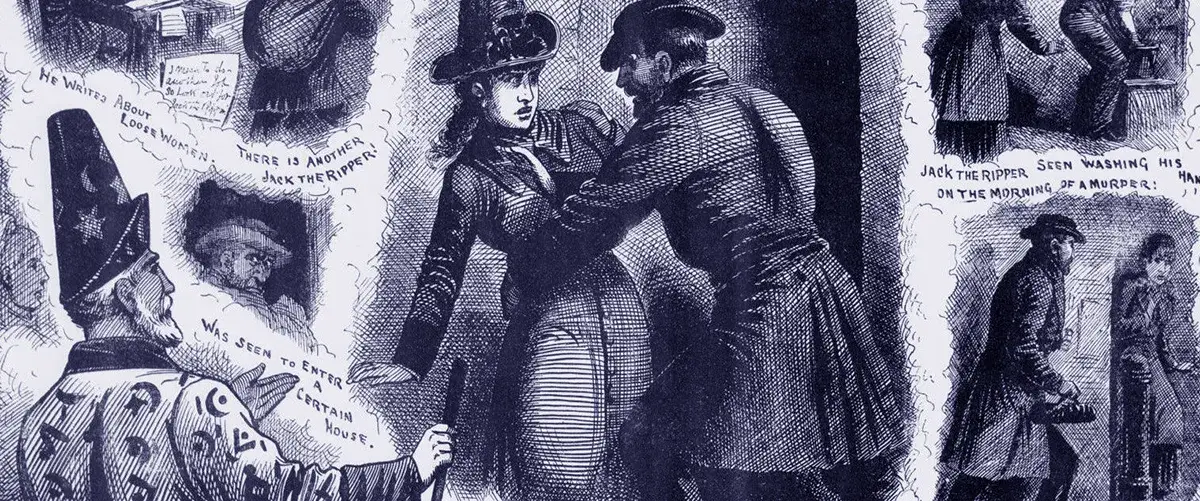How is a serial killer defined?
Serial killers are typically defined as individuals who have murdered three or more people over a period of time, with a cooling-off period between each murder. Other common features of serial killers include a psychological motive for the killings, a preference for particular victims or methods, and a desire for attention or control.
Some experts also differentiate between serial killers and mass murderers, who typically kill multiple people in a single incident. However, the exact definition of a serial killer may vary depending on the source or context.
For example, the FBI defines a serial killer as “a person who commits a series of two or more murders, often with no apparent motive and typically following a characteristic, predictable behavior pattern.” This definition emphasizes the repetitive nature of the killings, as well as the absence of an obvious motive, and the notion that serial killers often exhibit a consistent pattern of behavior across their crimes. It’s important to note that this definition is used by the FBI for statistical purposes and doesn’t necessarily reflect the legal definition of a serial killer in all jurisdictions.
Why are people fascinated with serial killers?
There are several reasons why people are fascinated with serial killers, including:
Morbid curiosity: Many people are intrigued by the macabre and are drawn to stories of violence and murder.
Psychological interest: Serial killers are often studied by psychologists and criminologists to better understand the complex factors that contribute to criminal behaviour.
Fear and safety: Some people may be drawn to stories of serial killers as a way to better understand the dangers of the world around them and to learn how to protect themselves.
Media portrayal: Serial killers have been depicted in popular culture, including movies and TV shows, which can contribute to their mystique and cultural significance.
Social commentary: Serial killers can also be seen as a reflection of broader social issues, such as inequality, mental illness, and the failure of the criminal justice system.
Why does someone become a serial killer?
The causes of serial killing are complex and can vary depending on the individual. However, some common factors that may contribute to the development of a serial killer include:
Childhood trauma: Many serial killers have experienced some form of childhood abuse, neglect, or trauma, which may have contributed to the development of a violent personality.
Mental illness: Some serial killers may have a diagnosable mental illness, such as antisocial personality disorder or psychopathy, which can result in a lack of empathy and disregard for the feelings and well-being of others.
Social factors: Some serial killers may have grown up in environments that were marked by poverty, social isolation, or exposure to violence, which can contribute to feelings of anger, frustration, and a desire for revenge.
Sexual motivations: In some cases, serial killers may be motivated by sexual fantasies or desires, which can drive them to commit violent acts.
It’s important to note that while these factors may contribute to the development of a serial killer, they don’t necessarily justify or excuse their actions. Serial killing is a complex and deeply disturbing phenomenon, and efforts to understand it are ongoing in the fields of criminology, psychology, and sociology.
The profile of a serial killer
There is no one-size-fits-all profile of a serial killer, as individuals who commit these crimes can come from all walks of life and have vastly different backgrounds and characteristics. However, there are some common traits and patterns that have been identified in many serial killers, including:
Male gender: The vast majority of serial killers are male, although there have been female serial killers as well.
History of childhood abuse or trauma: Many serial killers have experienced some form of childhood abuse or trauma, which can contribute to the development of violent tendencies.
Lack of empathy: Serial killers often display a lack of empathy or concern for the feelings and well-being of others, which can manifest in cruel or sadistic behaviour.
High intelligence: Some serial killers have above-average intelligence, which can make them more methodical and calculated in their crimes.
Patterns of behaviour: Serial killers often exhibit patterns of behaviour across their crimes, including preferred methods of killing, types of victims, or locations for the murders.
Need for control: Many serial killers have a deep-seated need for control over their victims and the situations in which they kill.
History of criminal behaviour: Some serial killers have a history of criminal behaviour, including arrests or convictions for violent crimes or other offences.
This list of traits and patterns is not a definitive indicator of a serial killer, and many individuals who fit these characteristics are not violent or criminal. It’s also crucial to avoid stigmatising individuals who have experienced abuse or trauma, as most survivors do not become violent offenders.
How are serial killings investigated?
Serial killings are investigated around the world using a variety of techniques and strategies. Some common methods include:
Profiling: Investigators may use profiling to create a psychological profile of the killer, based on factors such as the victims, the crime scenes, and the method of killing. This can help narrow down potential suspects and provide clues for the investigation.
Forensic evidence: Forensic evidence, such as DNA, fingerprints, and ballistics, can be used to link suspects to the crime scenes and the victims. This can help build a stronger case against the killer and provide evidence for a trial.
Witness interviews: Investigators may interview witnesses who were in the vicinity of the crimes, in the hope of gathering information that could lead to the identity of the killer.
Surveillance: Law enforcement agencies may use surveillance methods, such as CCTV cameras or undercover agents, to monitor potential suspects and gather evidence against them.
International cooperation: In cases where the killer may have crossed international borders, investigators may work with law enforcement agencies in other countries to track down the suspect and gather evidence.
Public appeals: Police may use public appeals to generate tips or information from the public that could help solve the case. This can include press conferences, media coverage, and social media campaigns.
Investigating serial killings can be a complex and time-consuming process, and it may take years to apprehend a suspect. It requires the collaboration of multiple agencies and the dedication of skilled investigators who are trained in the intricacies of this type of crime.
A list of 15 well-known serial killers
There have been many notorious serial killers throughout history. Below are ten serial killers that have been featured heavily in the media.
1. Ted Bundy
Active in the 1970s, Ted Bundy was known for his good looks and charm, which he used to lure his victims to their deaths. He confessed to killing 30 women but is believed to have killed many more.
2. Jeffrey Dahmer
Known as the “Milwaukee Cannibal,” Dahmer killed 17 men and boys in the 1980s and early 1990s. He dismembered his victims and in some cases, practiced cannibalism.
3. John Wayne Gacy
Dubbed the “Killer Clown,” Gacy was convicted of killing 33 young men and boys between 1972 and 1978. He buried most of his victims in the crawl space of his home.
4. Gary Ridgway
Known as the “Green River Killer,” Ridgway is one of the most prolific serial killers in U.S. history, having confessed to killing 71 women in the 1980s and 1990s.
5. Aileen Wuornos
A prostitute who killed seven men in Florida between 1989 and 1990, Wuornos claimed that the killings were in self-defense, but was ultimately convicted and sentenced to death.
6. Harold Shipman
A British doctor who killed at least 215 of his patients between 1975 and 1998 by administering lethal doses of drugs.
7. Andrei Chikatilo
Known as the “Butcher of Rostov,” Chikatilo was a Ukrainian serial killer who killed at least 52 people, mostly young women and children, between 1978 and 1990.
8. David Berkowitz
Also known as the “Son of Sam,” Berkowitz killed six people and wounded several others in New York City in 1976 and 1977. He claimed that his dog commanded him to commit the murders.
9. Richard Ramirez
Dubbed the “Night Stalker,” Ramirez killed at least 14 people and terrorised Southern California in the mid-1980s. He was known for his gruesome crimes, including rape, torture, and mutilation.
10. Ed Gein
A Wisconsin farmer who killed two women in the 1950s, Gein is also known for his grave-robbing and necrophiliac tendencies. His bizarre behaviour and gruesome crimes inspired the characters of Norman Bates in “Psycho” and Leatherface in “The Texas Chainsaw Massacre.”
11. Dennis Rader
Known as the “BTK Killer,” Rader killed ten people in Kansas between 1974 and 1991. He sent taunting letters to the police and local media, signing them with the initials “BTK” (which stood for “Bind, Torture, Kill”).
12. Charles Manson
While Manson didn’t actually commit any murders himself, he was the leader of a cult that committed a series of brutal killings in California in 1969. Manson and his followers were convicted of killing seven people, including the actress Sharon Tate.
13. Pedro Alonso Lopez
Known as the “Monster of the Andes,” Lopez confessed to killing over 300 young girls in Colombia, Ecuador, and Peru in the 1970s.
14. Albert Fish
A child rapist and killer who operated in the early 1900s, Fish was known for his disturbing crimes, which included cannibalism and self-harm. He claimed to have killed over 100 children, although the actual number is unknown.
15. Robert Pickton
A Canadian pig farmer who killed at least 26 women between 1983 and 2002, Pickton was known for his gruesome crimes and the shocking revelations about his farm, which was littered with human remains.

